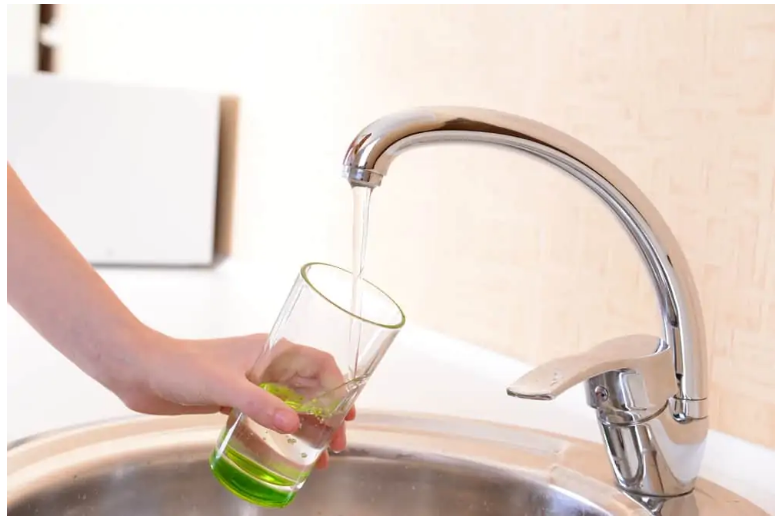Our Complete Advice to Dealing with Low Water Pressure in Your Home
Our Complete Advice to Dealing with Low Water Pressure in Your Home
Blog Article
We have stumbled upon the article involving 9 Reasons for Low Water Pressure in Your House below on the internet and reckoned it made sense to share it with you over here.

Low tide stress in your house can be a discouraging trouble, affecting whatever from showering to cleaning recipes. If you're experiencing weak water circulation, there are several possible reasons and solutions to check out. In this guide, we'll discuss usual reasons for low water pressure and sensible actions to resolve the concern properly.
Intro to Low Water Stress
Low water stress occurs when the circulation of water from your taps, showers, and various other components is weaker than usual. This can make daily jobs extra difficult and much less efficient. Recognizing the reasons for low water pressure is vital to discovering the best solution.
Common Causes of Low Water Pressure
Pipe Obstructions
Over time, pipes can come to be blocked with natural resource, debris, or particles, restricting the circulation of water. This is a common issue in older homes with galvanized steel pipelines.
Corrosion
Corrosion within pipelines can result in leakages and lowered water stress. Rust build-up can constrict water flow, especially in aging plumbing systems.
Faulty Stress Regulatory Authorities
Stress regulatory authorities are responsible for preserving constant water stress in your house. If they malfunction, it can result in low water pressure or irregular circulation throughout your home.
Metropolitan Supply Of Water Issues
In some cases, the issue exists outside your home. Community supply of water problems, such as main line leaks or upkeep work, can momentarily lower water stress in your area.
Just How to Detect Low Tide Pressure
Checking Taps and Fixtures
Begin by checking the water pressure at various faucets and components throughout your home. If the problem is separated to specific areas, it may indicate localized problems.
Inspecting Pipes
Check noticeable pipelines for indicators of leakages, deterioration, or blockages. Take notice of any type of unusual audios, such as banging or rattling pipelines, which might suggest problems within the plumbing system.
Consulting with a Plumber
If you're incapable to pinpoint the cause of low tide pressure, consider working with an expert plumber to perform a complete assessment. They can determine underlying issues and suggest suitable solutions.
Do It Yourself Solutions to Repair Low Water Stress
Cleaning Up Aerators and Showerheads
Natural resources can accumulate in aerators and showerheads, minimizing water flow. Get rid of and clean up these components consistently to enhance water stress.
Flushing Hot Water Heater
Debris build-up in the hot water heater can restrict flow and decrease efficiency. Flushing the container regularly helps get rid of sediment and maintain optimal performance.
Checking Pressure Regulatory Authority
Guarantee that the stress regulator is operating appropriately. Changing or replacing the regulator can assist recover proper water stress throughout your home.
Clearing Clogs in Piping
For minor blockages, attempt using a plumbing serpent or chemical drainpipe cleaner to clear obstructions in pipelines. Be cautious when using chemicals and adhere to safety guidelines.
When to Call a Specialist Plumber
If do it yourself efforts fail to fix the concern or if you believe significant plumbing problems, it's finest to look for aid from a qualified plumber. They have the knowledge and tools to deal with intricate problems safely and efficiently.
Preventive Measures to Maintain Water Stress
Regular Maintenance
Schedule routine maintenance for your plumbing system to prevent issues such as corrosion, leaks, and blockages. Addressing small issues early can help stay clear of more substantial repairs later.
Setting Up a Stress Booster
Consider setting up a stress booster pump to enhance water pressure in areas with consistently reduced flow. This can be especially useful for multi-story homes or residential properties with high-demand fixtures.
Tracking Water Use
Be mindful of water usage habits and stay clear of overtaxing the plumbing system. Straightforward changes, such as astonishing showers and washing lots, can aid maintain appropriate water pressure.
Conclusion
Handling low tide pressure can be aggravating, but recognizing the underlying reasons and implementing appropriate remedies can bring back optimal circulation throughout your home. Whether it's cleaning aerators, examining pipes, or speaking with a plumber, taking aggressive actions can make certain a steady supply of water for your daily demands.
FOUR WAYS TO FIX LOW WATER PRESSURE NOW
Turning on a shower or faucet only to find the water comes out in a sad, slow drizzle is never a good feeling. How exactly are you supposed to wash a pan or take a quick shower when it takes 10 minutes just to rinse off a little soap? The good news is that when your water pressure is bad, there's always a cause: typically one that can be easily fixed. Here are some of the most common causes of low pressure and what you can do to fix the issue:
DEBRIS AND MINERAL DEPOSIT BUILDUPS
If you notice low water pressure from just one or two of the fixtures in your house, the problem likely has to do with debris buildup. Water is full of minerals and other debris, all of which can accumulate in your pipes and on your fixtures. This can cause a blockage that affects how much water flows through. To fix this, try filling a small plastic bag with white vinegar, and use a rubber band to hang it around your showerhead or faucet. Let the head of the fixture soak for a few hours, and the vinegar should loosen the deposits.
WATER LEAKS
Leaks are another common cause of low water pressure. If water is flowing out of your plumbing through a hole or crack before it can reach your fixture, the pressure coming out of the faucet or showerhead will be lower. A plumbing professional is your best bet for finding and repairing a leak in your water supply pipes.
Leaks are another common cause of low water pressure. If water is flowing out of your plumbing through a hole or crack before it can reach your fixture, the pressure coming out of the faucet or showerhead will be lower. A plumbing professional is your best bet for finding and repairing a leak in your water supply pipes.
FOUR WAYS TO FIX LOW WATER PRESSURE NOW
Turning on a shower or faucet only to find the water comes out in a sad, slow drizzle is never a good feeling. How exactly are you supposed to wash a pan or take a quick shower when it takes 10 minutes just to rinse off a little soap? The good news is that when your water pressure is bad, there's always a cause: typically one that can be easily fixed. Here are some of the most common causes of low pressure and what you can do to fix the issue:
DEBRIS AND MINERAL DEPOSIT BUILDUPS
If you notice low water pressure from just one or two of the fixtures in your house, the problem likely has to do with debris buildup. Water is full of minerals and other debris, all of which can accumulate in your pipes and on your fixtures. This can cause a blockage that affects how much water flows through. To fix this, try filling a small plastic bag with white vinegar, and use a rubber band to hang it around your showerhead or faucet. Let the head of the fixture soak for a few hours, and the vinegar should loosen the deposits.
WATER LEAKS
Leaks are another common cause of low water pressure. If water is flowing out of your plumbing through a hole or crack before it can reach your fixture, the pressure coming out of the faucet or showerhead will be lower. A plumbing professional is your best bet for finding and repairing a leak in your water supply pipes.
Leaks are another common cause of low water pressure. If water is flowing out of your plumbing through a hole or crack before it can reach your fixture, the pressure coming out of the faucet or showerhead will be lower. A plumbing professional is your best bet for finding and repairing a leak in your water supply pipes.
A VALVE ISSUE
If you have low water pressure throughout your home, check your main shut-off valve to make sure it's completely open. You may also want to see if there's a pressure-reducing valve installed. If there is, have a plumber help you adjust the settings to get the pressure you're looking for.
OTHERS USING WATER
Believe it or not, your low water pressure could be caused by your neighbors. If you notice low pressure at certain times of day, it may be because you and the people living next to you have similar schedules - when everyone is showering at the same time, the pressure will be lower in every home. Low pressure throughout the neighborhood may also be caused by an issue with your municipal water supply. If that's the case, call the supplier to see if they're working on the issue.
https://www.rotorooter.com/blog/water-leaking/low-water-pressure-fixes/

I'm certainly very interested in and I'm hoping you appreciated the entire piece. If you enjoyed our blog posting plz don't forget to pass it around. Thank you for your time invested reading it.
Click For More Info Report this page